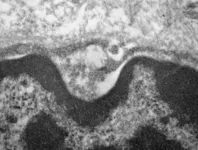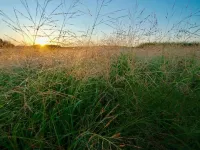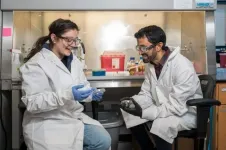What to do with food waste? Well, that depends
NREL researchers examine disposal methods as more landfills prepare to shut down
2021-07-06
(Press-News.org) The expected decline in the number of landfills across the United States coupled with bans on disposing large amounts of organic waste in landfills that have been enacted in multiple states has prompted researchers at the U.S. Department of Energy's (DOE's) National Renewable Energy Laboratory (NREL) to examine other ways to grapple with the issue of food waste disposal.
The researchers determined no single solution exists in the United States for dealing with food waste disposal. NREL researchers Alex Badgett and Anelia Milbrandt came to that conclusion after examining the economics involved in five different ways to handle disposing of food waste, including tossing it into a landfill. Both researchers are part of NREL's Strategic Energy Analysis Center.
"If we are trying to develop an optimized waste management system in the U.S. that diverts all food waste from landfills, there is not necessarily any one technology that will work for all areas of the country," Badgett said. "An optimized system would likely use different technologies in different locations and at different sizes."
Badgett and Milbrandt are coauthors of a newly published paper titled "Food waste disposal and utilization in the United States: A spatial cost benefit analysis," which appears in Journal of Cleaner Production.
About 75% of food waste winds up in landfills. But many landfills are running close to capacity and a significant number are scheduled to close by 2050, the researchers found. Although sufficient land is available for new landfills in rural America, residents in more-populated regions will be forced to transport waste long distances for disposal. Secondly, organic waste disposal bans enacted in several states require disposal of food waste in facilities other than landfills. Given a need for investment in new waste management facilities, an opportunity exists for innovative and improved pathways for waste streams. Badgett and Milbrandt examined five options for what to do with food waste, including the continued dumping into landfills. The other four options are:
Anaerobic digestion, in which microorganisms break down biodegradable material in the absence of oxygen
Composting, a biological process involving decomposition of organic matter in a controlled environment to produce compost
Incineration, where trash is burned for heat and/or power
Hydrothermal liquefaction, in which wet organic material is converted into biocrude.
Incineration has fallen out of favor because of increased environmental regulations and public opposition to the construction of new facilities. Hydrothermal liquefaction remains in the pilot stage.
The researchers examined the economics of operating various types of facilities, considering how much revenue each brings in from users or from the sale of products. They modeled the financial viability of the technologies, considering capital and operating costs of the facilities; revenue from the sale of power, heat, fuels, and other products; and production credits such as Renewable Identification Number (RIN) credits under the Renewable Fuel Standard for the generation and use of biogas as vehicle fuel.
All of the ways to handle food waste exhibit some economy of scale (where costs decrease when facilities are built at larger sizes), but the researchers found the rate at which financial viability changes with size of the facility is not consistent. For example, landfills and incinerators designed to treat bulk municipal solid waste, which includes food waste, must be constructed at large sizes in order to leverage economies of scale for these pathways, while digesters and composters can be built at smaller scales and still provide a profitable alternative for food waste disposal.
All the different types of facilities would benefit from developing technologies to produce biogas or related products, but benefits are greatest for those operating at medium to large scales. Facilities that currently accept food waste in large amounts are better suited to maximize the economic benefits associated with producing fuels, power, or products since they have a supply of feedstock readily available.
Waste management facilities charge users a gate fee to offset operating and capital costs. If a facility can produce enough biogas to reduce its dependence on fees, it either becomes more profitable or can reduce those fees to become more competitive.
The location of a facility plays an important role in determining its profitability, the researchers found. For example, states along the East and West coasts have the highest gate fees and are therefore more economically favorable.
DOE's Bioenergy Technologies Office funded the research.
NREL is the U.S. Department of Energy's primary national laboratory for renewable energy and energy efficiency research and development. NREL is operated for the Energy Department by the Alliance for Sustainable Energy, LLC.
INFORMATION:
ELSE PRESS RELEASES FROM THIS DATE:
2021-07-06
In Brazil, researchers at the University of São Paulo’s Medical School (FM-USP) have discovered that SARS-CoV-2 infects and replicates in the salivary glands.
Analysis of samples from three types of salivary gland obtained during a minimally invasive autopsy procedure performed on patients who died from complications of COVID-19 at Hospital das Clínicas, FM-USP’s hospital complex, showed that tissues specializing in producing and secreting saliva serve as reservoirs for the novel coronavirus.
The study was supported by FAPESP and reported in an article published in the Journal of Pathology.
The researchers said the discovery ...
2021-07-06
Bioenergy crops are an alternative energy source that, unlike fossil fuels, could positively impact the environment by reducing greenhouse gases, soil erosion, and carbon dioxide levels. They can be produced even more sustainably if they are grown on poor quality land unsuitable for food. To make up for the poor land quality, these crops can rely on soil microbes like bacteria and fungi to help them access nutrients and water and store more carbon.
Switchgrass, a native prairie species, is championed as a promising bioenergy crop due to its ability to grow across many climates. ...
2021-07-06
BUFFALO, N.Y. - How the media frame stories about science affects the public's perception about scientific accuracy and reliability, and one particular type of narrative can help ameliorate the harm to science's reputation sometimes caused by different journalistic approaches to scientific storytelling, according to a new study led by a University at Buffalo researcher.
"What our experiment shows is that the way the news media talk about science focuses too much attention on individuals in a way that doesn't accurately describe the way science actually works," says ...
2021-07-06
Amid calls for racial and social justice nationwide, businesses and educational institutions are grappling with how to adopt more inclusive organizational practices, including more diversified hiring. However, recruitment teams and strategic leaders often blame their lack of a diverse workforce on a lack of diverse applicants. A large study of recruitment data suggests a simple and efficient way of increasing diversity in applicant pools: have more diverse recruitment committees and leadership teams.
The study, led by researchers at the University of Houston's Center for ADVANCING ...
2021-07-06
Findings from a study published today [6 July] in the Journal of the American Medical Association (JAMA) have prompted new World Health Organization (WHO) recommendations to use interleukin-6 antagonists in patients with severe or critical COVID-19 along with corticosteroids.
A new analysis of 27 randomised trials involving nearly 11,000 patients found that treating hospitalised COVID-19 patients with drugs that block the effects of interleukin-6 (the interleukin-6 antagonists tocilizumab and sarilumab) reduces the risk of death and the need for mechanical ventilation.
The study, which was coordinated by WHO in partnership with King's College London, University of Bristol, University ...
2021-07-06
ITHACA, N.Y. - As offices nationwide spring back to life, interior space designers and architects will soon have an easy-to-use planning tool to place indoor workplace furniture, staff, partitions and ventilation in a manner that maximizes fresh air flow and reduces the risk of airborne pathogens.
The Cornell Environmental Systems Lab in the College of Architecture, Art and Planning will introduce a new indoor module for their existing Eddy3D software, a professional-level airflow and microclimate simulator that can help improve ventilation.
The new indoor module will be released this summer, while the research supporting it will ...
2021-07-06
Scientists and engineers are constantly looking for ways to better our world.
Synthetic biology is an emerging field with promise for improving our ability to manufacture chemicals, develop therapeutic medicines such as biopharmaceuticals and vaccines, and enhance agricultural production, among other things. It relies on taking natural or engineered pieces of DNA and combining them in new ways in biological systems, such as microbes, bacteria or other organisms.
According to University of Delaware's Aditya Kunjapur, assistant professor of chemical and biomolecular engineering, as these sophisticated microbial technologies are advanced, scientists need to explore ways to keep these organisms from ending up in the wrong environment.
For example, a bacterium that is good at making ...
2021-07-06
UNIVERSITY PARK, Pa. -- What if the COVID-19 virus could be used against itself? Researchers at Penn State have designed a proof-of-concept therapeutic that may be able to do just that. The team designed a synthetic defective SARS-CoV-2 virus that is innocuous but interferes with the real virus's growth, potentially causing the extinction of both the disease-causing virus and the synthetic virus.
"In our experiments, we show that the wild-type [disease-causing] SARS-CoV-2 virus actually enables the replication and spread of our synthetic virus, thereby effectively promoting its own decline," said Marco Archetti, associate professor of biology, Penn State. "A version of this synthetic construct could be used as a self-promoting ...
2021-07-06
UNIVERSITY PARK, Pa. -- The fast-moving decline and extinction of many species of detritivores -- organisms that break down and remove dead plant and animal matter -- may have dire consequences, an international team of scientists suggests in a new study.
The researchers observed a close relationship between detritivore diversity and plant litter decomposition in streams, noting that decomposition was highest in waters with the most species of detritivores -- including aquatic insects such as stoneflies, caddisflies, mayflies and craneflies, and crustaceans such as scuds and freshwater shrimp and crabs.
Decomposition ...
2021-07-06
ABINGTON, Pa. -- Counterfeit dominance decreases Anglo-American, but not Asian, consumers' quality perception and purchase intention of authentic brands, according to a team of researchers.
"Counterfeit dominance is the perception that counterfeit products possess more than 50% of market share," Lei Song, assistant professor of marketing at Penn State Abington, said. "Counterfeit dominance is a phenomenon especially concerning for the luxury fashion industry as counterfeit luxury fashion brands account for 60% to 70% of the $4.5 trillion in total counterfeit trade and one-quarter of total sales in luxury fashion goods."
Lei and his team conducted four behavioral experiments with 149 participants on ...
LAST 30 PRESS RELEASES:
[Press-News.org] What to do with food waste? Well, that depends
NREL researchers examine disposal methods as more landfills prepare to shut down



